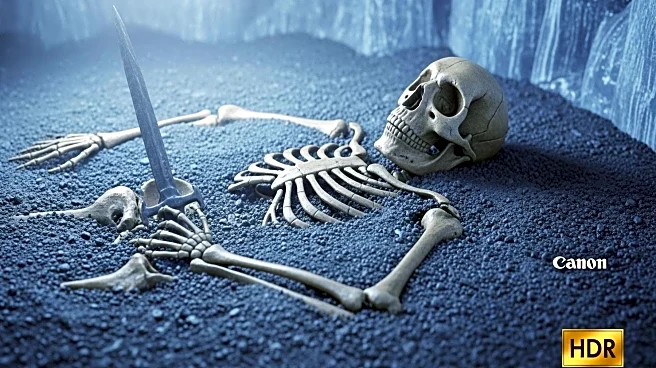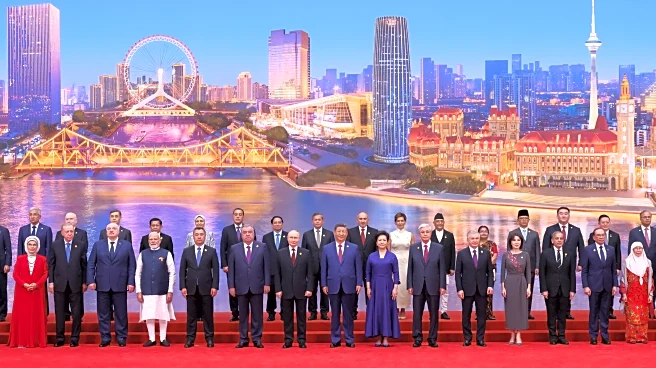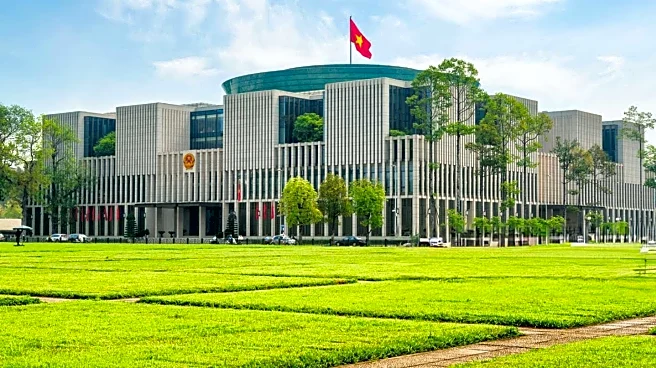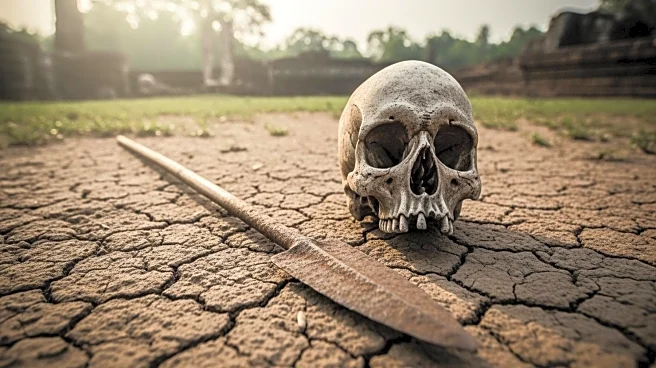What is the story about?
What's Happening?
A well-preserved human skeleton, dating back approximately 12,000 years to the Ice Age, has been excavated in Vietnam. The remains, found in the Thung Binh 1 cave, belong to a man who died at around 35 years old after being pierced in the neck by a quartz projectile. This discovery, reported in the journal Proceedings of the Royal Society B, may represent the earliest evidence of interpersonal conflict among hunter-gatherers in mainland Southeast Asia. The skeleton, dubbed 'TBH1', was found with signs of tissue growth and infection, suggesting the man lived for months after his injury. The quartz projectile, which showed signs of human workmanship, was not local to the site, hinting at possible violence between different populations.
Why It's Important?
This discovery provides a rare glimpse into the lives of hunter-gatherers during the Late Pleistocene era, a period with scarce human skeletal material in Southeast Asia. The evidence of interpersonal violence challenges previous assumptions about the social dynamics of foraging economies during this time. The presence of an 'exotic technology' projectile suggests interactions, possibly hostile, between different groups. This finding contributes to the understanding of human migration and social structures in prehistoric Southeast Asia, offering insights into the evolution of human societies.
What's Next?
Further archaeological work is necessary to reconstruct the circumstances surrounding the man's death and to explore the broader implications of this discovery. Researchers may investigate other sites in the region to find additional evidence of early human conflict and interaction. The study opens avenues for understanding the social and technological exchanges between ancient populations, potentially reshaping narratives about human history in Southeast Asia.
Beyond the Headlines
The discovery raises ethical questions about the interpretation of ancient human remains and the narratives constructed around them. It also highlights the importance of preserving archaeological sites and the challenges faced in excavating and analyzing fragile remains. The study underscores the need for interdisciplinary collaboration in uncovering and understanding human history.
AI Generated Content
Do you find this article useful?















